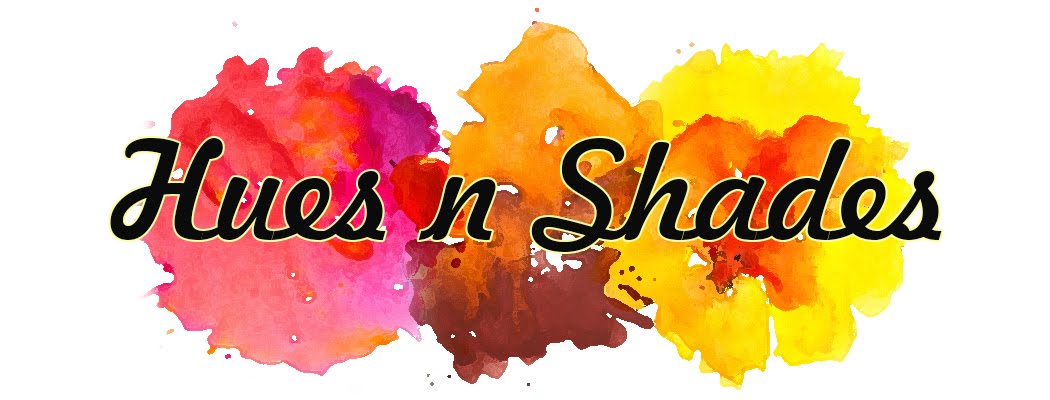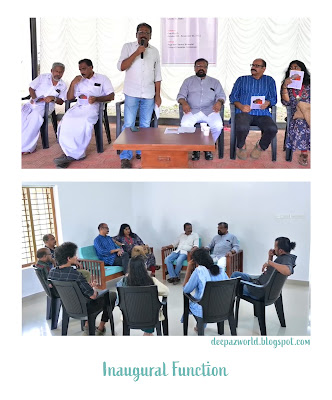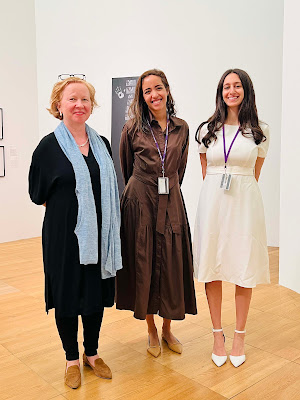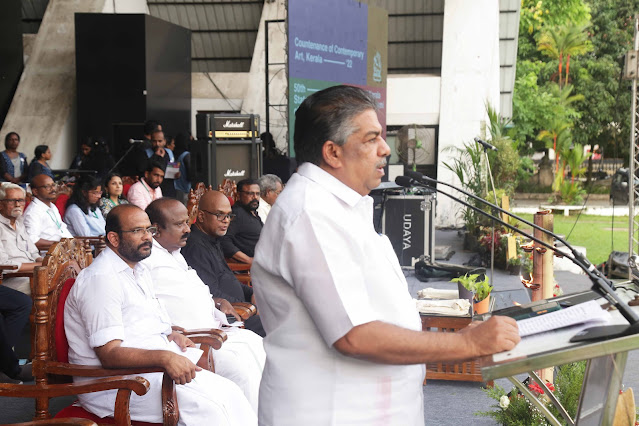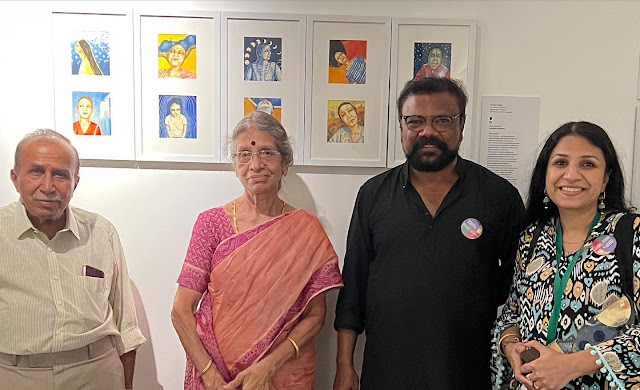The Travel
The residency was inaugurated by the esteemed artist, N N
Rimzon, presided over by the Secretary of Kerala Lalithakala Akademi, N
Balamuralikrishnan in the presence of Tom J Vattakuzhy – Executive member, KLA,
T R Manoj – President, Kilimanoor Grama Panchayath, Kottara Mohan Kumar – Ward
member and Latha Kurian Rajeev – General Council Member, KLA. A humble ceremony
that took off with a workshop with children from the local school.
Residency Space
The residency space is in the same compound of Raja Ravi
Varma Gallery in Kilimanoor next to the RRV Boys School. The gallery is quite
famous in the vicinity but one would be disappointed since it holds only prints
of Raja Ravi Varma. If you are keen to see some originals, you need to travel
to Sri Chithra Art Gallery, Thiruvananthapuram.
The high-ceiling, double-storied traditional space can house up
to six artists on a twin-sharing basis on the upper floor. It has a common living
space and a storeroom next to the bedrooms while kitchen, dining and caretaker’s
space is on the lower floor. A beautiful structure amid trees and a rubber
plantation behind which connects to the school ground. The premise also houses
a stage and an amphitheater, which functions as gallery seating.
Each room is cozily located with a pair of beds, side tables,
tables, chairs and cabinets all in lovely Rubco dark wood. The ceiling is quite
high and well-ventilated. The four-panelled window in the room opens into the
rubber plantation. The air was quite breezy this time of the year; it was
raining quite profusely some of the days!
The only drawback, for now, is the lack of studio space. The
Akademi mentioned that the facility would be opened soon.
Another major highlight was the scrumptious food they served every
day with love. The Chief Chef, Aradhana with Aneesha, her assistant under the
supervision of Mohanettan, took extra care to make delicious and fresh food at
every mealtime. Meals matter!
 |
| Photo: KLA |
The Residents
We were five artists from different domains. R B Shajith and Smitha Shajith, the
husband-wife duo as mentioned earlier, are artists from Kannur and Kollam
respectively. Biji Bhaskar is from Muvattuppuzha, Abdulla from Thrissur, the
youngest of our lot and yours truly from Palakkad/Dubai. Shajith – the
measured-thinker, Smitha – peals of laughter, Biji – master of witty punch
lines, Abdu – the over-thinker-laugh-instigator and I was probably the
listener-observer!
We connected almost immediately. I had met Biji and Smitha
earlier but they were only acquaintances until the residency. We entered into
seamless conversations and discussions and our interactions were one of the cherished
moments!
Now, I need to dwell on my fellow artists-residents a little
longer. Each one of us is different in our practice, evidently. While I meander
in mine as I mull over, reflect, watch, observe, and move at a slow pace, I saw
another extreme at Shajit’s end. The rest of us looked at ‘his quarter’,
jaw-dropped! He is a speed-painter and created the most works. His technique
requires that pace for the abstraction he is adept at it. They are large-scale
works intensely inviting into their rural scenarios; an environment he is
familiar with, something that dwells around him or rather he dwells in it.
Biji is quite a detailer, his works otherworldly and his
images have an earnest impact on the viewer. His colour palette is fascinating
too, adding to its whimsical element. He draws inspiration from his immediate environment
just like Shajit only to take on an unreal facet. He has a finesse that adds a
dramatic quality to his strokes that comes from experience.
For Smitha Babu, theater is an integral part and that reflects
in her works. Her themes imbue the sense of stage and the actors, the
characters who inhabit the limelight and sometimes outside the limelight. Her
palette is interesting too particularly the neon pink that brings light onto
her canvas. Women abound in her world as well. One of the jolly lots, her laugh
is infectious!
 |
| Above: R B Shajith, Smitha Shajith, Deepa Gopal, Biji Bhaskar, Abdulla P A |
Residency
The residency
was for the duration of one month from 02 Oct to 02 Nov 2022.
Speaking about the highlights of this residency, we had complete liberty be it regarding the theme, the number of works or anything else; we were on our own. Personally speaking, this freedom gave us time for introspection, reflection, research and experimentation with subjects. I tried a couple of subject matters that had been on my mind for some time. Larger part of my works were small studies.
Remarkable supplements during the residency were the morning/evening walks we took. Each night after dinner, we played an art documentary, an Oscar-winning foreign language film, a Chaplin movie, and a couple of times some no-brainer for comic relief. We all shared a collective consciousness at this point and that was something that awed as well as humbled and linked us.The silent Squad
Shijith, the overseer from the Akademi, was with us for two
weeks ready to help us with whatever we needed. He used to sketch, watch movies
and documentaries with us. Babuettan was extremely helpful in every aspect.
Mohanettan was one of the prominent persons in this
residency. His promptness, organization and care to detail were vivid. A father-figure,
he made sure that everything was done on time and that probably was one of the
reasons for the smooth functioning of matters. He also cooked for us in between
and his cuisine is delish! Aradhanachechi, the chief chef, I have to reinforce
is an excellent cook. Mahesh spoke sparsely but functioned efficiently with
materials and matters, always around to help.
The securities, Shareef and Kurupchettan, were people to
remember too. The fun, the frolic, and the warmth each one of them spread helped
us in our stay making it cozy and comfortable. They are the silent squad who
are vital for a project to work efficiently. The people around the residency
space too, have so much love, affection, warmth, and care to provide.
 |
| L to R - Kurupchettan, Mohanettan, Abdulla P A, Deepa Gopal, Smitha Shajith, Biji Bhaskar, R B Shajith, Mahesh, Aneesha, Aradhana |
Submission
As promised, we all contributed a work of ours to the Kerala
Lalithakala Akademi at the end of our residency. Along with that work, we also
submitted most of our works as requested by the Akademi awaiting an exhibition
as mentioned. Hopefully, we will all be getting an opportunity to meet soon.
Gratitude
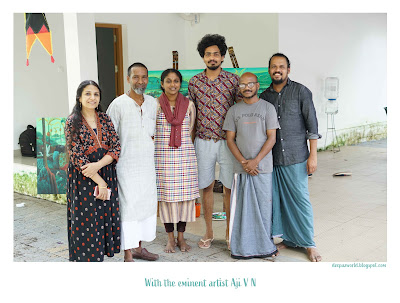 |
| Deepa Gopal, Aji V N, Smitha Shajith, Abdulla P A, Biji Bhaskar, R B Shajith |
Last but not the least; I would also like to thank the renowned
artist, Aji V N, who spent a day with us. Aji put forward a slide presentation
of all his major works explaining in detail his thoughts, travels, reads,
colour palette, framing, et al. It was illuminating and enriched us.
Thank you Kerala Lalithakala Akademi!
